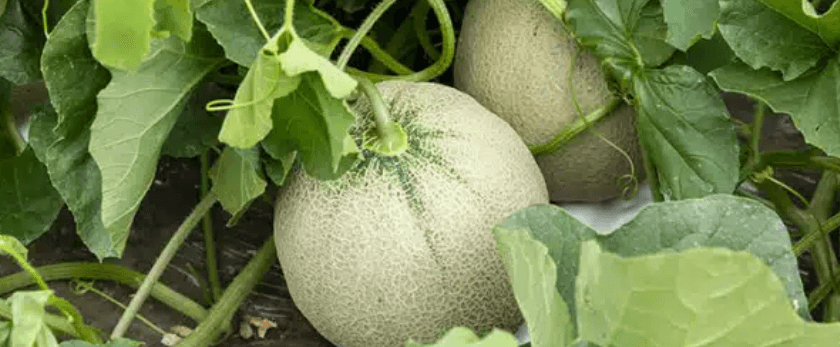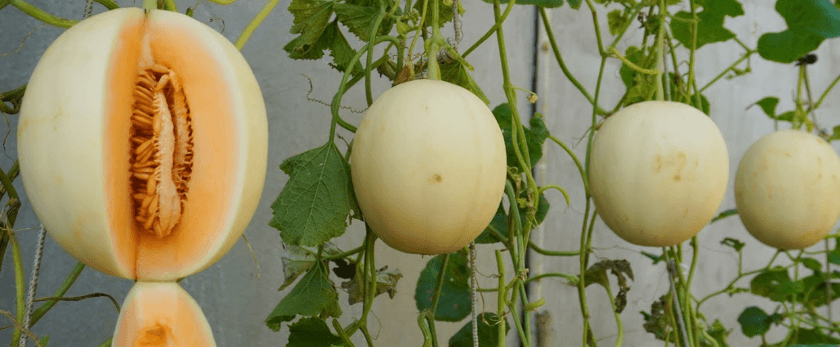Honeydew melons are a delicious and refreshing fruit that can be grown in your own backyard. Not only are they a tasty addition to your summer meals, but they also have numerous health benefits. Honeydew melons are rich in vitamins and minerals, low in calories, and have a high water content, making them a great choice for hydration. Plus, growing your own honeydew melons is a fun and rewarding experience that allows you to have control over the growing process and ensures that you are getting fresh, organic produce.
If you're interested in growing honeydew melons, here are some tips and tricks to help you get started.
How to Care for Honeydew Melons
Watering
Honeydew melons require consistent watering to thrive. They have shallow roots, so it's important to water them deeply and frequently. The best way to water honeydew melons is through drip irrigation or a soaker hose. This ensures that the water reaches the roots without wetting the leaves, which can lead to fungal diseases.
During the first few weeks after planting, water the melon plants every other day. As the plants grow, increase the frequency to daily watering. Once the fruits start to develop, reduce the frequency to every 2-3 days, but make sure to water deeply each time.
Light
Honeydew melons need full sun to grow and produce sweet fruits. Make sure to choose a spot in your garden that receives at least 6-8 hours of direct sunlight every day. If you live in a hot climate, providing some afternoon shade can help prevent the fruits from getting sunburned.
Soil
Honeydew melons prefer well-draining, loamy soil with a pH level between 6.0-6.8. Before planting, amend the soil with compost or well-rotted manure to improve its texture and fertility. This will also help the soil retain moisture, which is essential for the growth of honeydew melons.

Fertilizer
Honeydew melons are heavy feeders and require regular fertilization to produce healthy fruits. Before planting, mix in a slow-release fertilizer into the soil. Once the plants start to grow, side-dress them with a balanced fertilizer every 3-4 weeks. You can also use organic fertilizers like compost tea or fish emulsion.
Pruning
Pruning is not necessary for honeydew melons, but it can help improve air circulation and prevent diseases. If you notice any dead or diseased leaves, remove them immediately. You can also prune off any suckers or side shoots that are growing from the base of the plant.
What is the Best Time to Grow Honeydew Melons?
Honeydew melons are warm-season crops and require a long, hot growing season to produce ripe fruits. The best time to grow honeydew melons is in the late spring or early summer when the soil has warmed up to at least 70°F. In cooler climates, you can start the seeds indoors 3-4 weeks before the last frost date and transplant them outside once the soil has warmed up.
Common Problems with Honeydew Melons
While honeydew melons are relatively easy to grow, they can face some common problems that can affect their growth and yield. Here are some of the most common problems and how to prevent or treat them.
Pests
Honeydew melons can be susceptible to pests like aphids, cucumber beetles, and squash bugs. These pests can damage the leaves and fruits, leading to stunted growth and reduced yield. To prevent pest infestations, keep your garden clean and free of debris, and use row covers to protect the plants. If you notice any pests, you can handpick them or use organic insecticides.
Diseases
Honeydew melons can also be affected by fungal diseases like powdery mildew, downy mildew, and fusarium wilt. These diseases can cause the leaves to turn yellow and wilt, and the fruits to rot. To prevent diseases, make sure to water the plants at the base and avoid getting the leaves wet. You can also use organic fungicides as a preventive measure.
Blossom End Rot
Blossom end rot is a common problem in melons, including honeydew melons. It is caused by a calcium deficiency in the soil, which leads to the fruits developing a dark, sunken spot at the bottom. To prevent this, make sure to maintain consistent soil moisture and provide adequate calcium through fertilization.
Conclusion
Growing honeydew melons is a fun and rewarding experience that can provide you with fresh, organic produce. By following these tips and tricks, you can ensure that your honeydew melons grow and produce sweet, juicy fruits. Remember to water consistently, provide enough sunlight, and fertilize regularly to keep your plants healthy and productive. With a little bit of care and attention, you can enjoy delicious honeydew melons all summer long.










